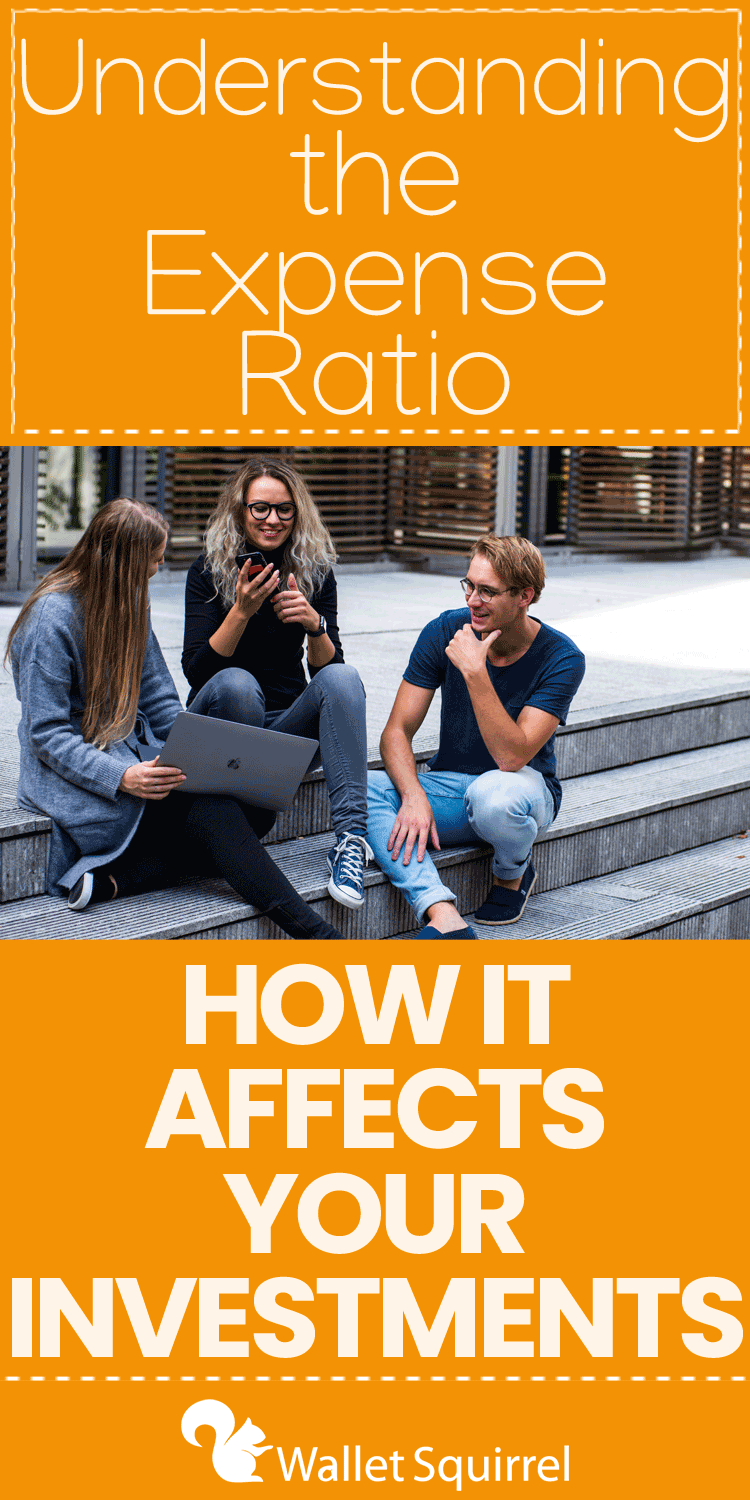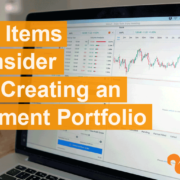Understanding the Expense Ratio and How It Affects Your Investments

Not wanting to pay for anything you don’t have to is also true with investing. You want to maximize the return on any investment you have. You might think that means finding the investment with the best returns. High returns are certainly an eye-catching statistic. They are a significant factor when deciding where to invest your money. However, there is a bit more to it. The flip side of it is how much its costs you to invest in any particular fund. That’s where the expense ratio comes in.
What is an Expense Ratio?
An expense ratio can most easily be defined as the cost for a fund to operate vs. its assets’ total value. Think of any fund as a business. Employees need salaries, rent for the office needs to get paid, utility bills to pay, office supplies to buy, and just general costs of doing business. Well, a mutual fund is no different. There are people actively working behind the scenes doing all sorts of research, making trades, working through legal formalities, and various other tasks. These management fees and operation costs get passed on to you, the shareholder.
Determining a fund expense ratio is relatively simple. Take the total of the operating expenses and divide that by the fund’s net asset value or NAV. For example, if a fund has 500k in expenses and 50mm in assets, it would have a 1% expense ratio.
Why Are Expense Ratios Important?
Knowing the fees associated with anything you’re paying for is essential, and investing is no different. When you invest in a fund with a higher expense ratio, the returns you earn are lowered by that much more. If you are interested in a few funds, lower expense ratios make an excellent secondary factor. Would you rather invest in a fund that charges you 1% or 1.25%? Simple math says if the returns are about equal, you would want to pay lower fees.
Don’t think because you aren’t investing millions of dollars that you can ignore these fees either. They may seem small, but even a slight difference in expense ratios will add up to any investor over the long term.
Take two investments of 10k each, one investing in a fund with an expense ratio of 1% and another of 1.25%. Using a 7% return rate and assuming no additional contributions after ten years, the 1% ratio will net you an extra $400. After 20 years, you’ll have an extra $1500, and after 30 years, you’ll have an additional $4000!
The above are some straightforward calculations and assumes the returns for each fund are precisely the same. In the real world, you won’t find two funds like that, but it does illustrate my point that although the fees may seem small in the short term, there are most undoubtedly long-term implications. Now imagine the difference in your investments when you keep contributing!
How do I Know a Funds Expense Ratio?
Now that you know about expense ratios and how they can change your investments, where do you find them? Well, the good news is that they are relatively easy to find. Funds are required to make them known to investors, so we’re not talking about hidden fees here. There are a few ways potential investors go about determining a funds expense ratio.
The primary way and likely the easiest can be done using your brokerage accounts. When looking up any fund, you’ll typically see many of its attributes along with it. Most of us look straight at the money-making aspects like a fund’s overall return rate or dividend yield. The expense ratio is listed along with those attributes, and you didn’t know it was there!
Another way to find the expense ratio is to find the fund’s prospectus. A prospectus is an overview of a fund’s investments. It needs to be filed with the SEC and sent to investors each year. Within this, you’ll find a section about any fees associated with the fund. If you do this, you might see two expense ratios, net and gross. Without going into all the details, the net expense ratio is eventually passed along to the investors.
You can find the prospectus itself in a few ways as well. If you are already an investor, this will be sent to you every year by the fund. Search through the piles of emails in your trash bin, and you’ll likely find it in there. Typically brokerage firms will also have the prospectus available to you when researching their site as well. Finally, you can go directly to a funds website, if available, and you’ll be able to find the prospectus there as well. It might take some poking around, but it’s there.
Finally, if all else fails, do what you do for anything else, Google it! Doing a quick and simple search for a stock ticker plus the words “expense ratio” will quickly find you the information you need.
Can You Avoid Expense Ratios?
Any fund you invest in will have operating expenses, so no, if you are a mutual fund investor, you can’t avoid them. Don’t let it deter you, as other investment choices will have costs associated with them as well. However, what you can do is find funds with relatively low costs associated with them.
“According to independent investment research firm Morningstar, the 2019 average asset-weighted expense ratio in the US was 0.45%.”
Even with that average in mind, there are still a few things to consider. Primarily the type of the fund and its strategy. Nowadays, there are three main types of funds, mutual funds, ETFs(Exchange-Traded Funds), and index funds.
Mutual funds and ETFs are considered actively managed funds, meaning that they are actively making trades on your behalf within the fund regularly. An active fund typically comes with higher expense ratios as it’s more expensive to research and make trades constantly. A typical or average expense ratio for an actively traded mutual fund or Etf would be around .66%.
Opposite to the active management strategy, index fund investing is more of a passive investment. Indexes are diversified and aim to track a particular section of the market or even the stock market as a whole, like the Dow Jones Industrial Average or S&P 500 index. These funds typically have a low portfolio turnover and are rebalanced far less than their actively managed counterparts. So on the expense side, these naturally come in much lower. The average ratio for passively managed funds is around .13%. Many firms such as Vanguard Group, Fidelity Investments, or T. Rowe Price will have index funds specific to their brokerage accounts with even lower rates as well.
Which Investment Strategy Should I Use?
Your investment strategy comes down to how active or passive you want to get with your investments. Over the long haul, actively managed funds don’t typically outperform index funds. With the higher fees involved and similar returns, passive investing make sense for most of us. Index investing allows us to put our money in an index fund and forget about it, making better use of our valuable time.
However, mutual funds can outperform index funds over a short period of time. In investing terms, that might mean a few months or even a few years. If you want to take on a more active role in your investing, you can review and rebalance your portfolio as you see fit. Short-term investing can be difficult in a good market, never mind a volatile or bear market. Please make sure you are ready to put in much effort consistently see returns high enough to make an effort and higher expense ratios worth it.
You can always take on a hybrid investment portfolio. You can invest most of your money with index funds while investing in a few mutual funds to see higher gains. As always, it’s about diversification and making sure your investments align with your personal goals.
Conclusion
A fund’s expense ratios help us understand the costs of investing in any particular mutual fund or ETF. Actively managed mutual funds need to cover their expenses. The fees and expenses typically get passed onto the investor in the form of expense ratios. Before you buy shares, invest a little time understanding mutual fund fees charged. They may seem like small fees to pay. However, over the long term, a reasonable expense ratio can drastically change your capital gains. When deciding which type of investment you want to make, they should be taken into consideration by any investor.
Additional Sources
- Robin Kavanagh. What is an expense ratio? The most important fee to know when investing in mutual funds or ETFs.2020). https://www.businessinsider.com/what-is-expense-ratio
- ADAM HAYES. (2021). The Definition of Expense Ratio. https://www.investopedia.com/terms/e/expenseratio.asp
This article originally appeared on Your Money Geek and has been republished with permission.









